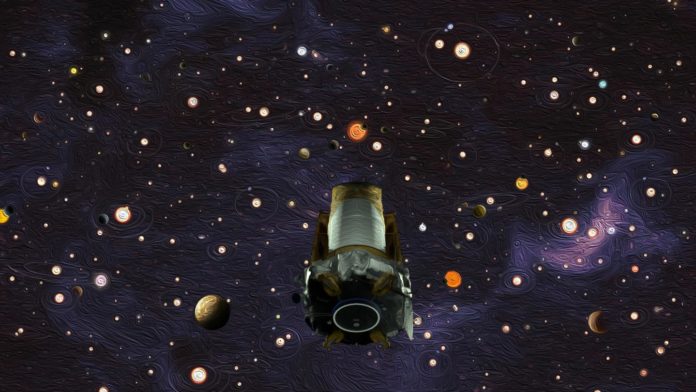Most of the more than 4,000 exoplanets astronomers have found across the past few decades originate from NASA’s pioneering Kepler mission, which launched in 2009 and retired in late October 2018. Kepler identified thousands of stars and exoplanets by documenting transit events.
Transit events occur when a planet’s orbit goes between its star and the telescope, obstructing a portion of the star’s light with the goal that it seems to diminish. By estimating the amount of dimming and the duration among transits and utilizing data about the star’s properties astronomers describe the size of the planet and the distance between the planet and its host star.
Eric B. Ford, professor of astronomy and astrophysics at Penn State and one of the leaders of the research team said, “Kepler discovered planets with a wide variety of sizes, compositions, and orbits. We want to use those discoveries to improve our understanding of planet formation and to plan future missions to search for planets that might be habitable. However, simply counting exoplanets of a given size or orbital distance is misleading, since it’s much harder to find small planets far from their star than to find large planets close to their star.”
To beat that obstacle, the scientists designed another strategy to construe the occurrence rate of planets over a wide range of sizes and orbital distances. The new model simulates ‘universes’ of stars and planets and after that observes these simulated universes to decide what number of the planets would have been found by Kepler in every ‘universe.’
Scientists used the final catalog of planets identified by Kepler and improved star properties from the European Space Agency’s Gaia probe to build simulations. They then compared the results to the planets cataloged by Kepler to characterize the rate of planets per star and how that depends on planet size and orbital distance.
Danley Hsu, a graduate student at Penn State and the first author of the paper said, “Our novel approach allowed the team to account for several effects that have not been included in previous studies.”
The aftereffects of this investigation are especially important for planning future space missions to characterize conceivably Earth-like planets. While the Kepler mission found a huge number of small planets, most are so far away that it is difficult for astronomers to learn insights regarding their structure and environments.
Ford said, “Scientists are particularly interested in searching for biomarkers–molecules indicative of life–in the atmospheres of roughly Earth-size planets that orbit in the ‘habitable zone’ of Sun-like stars. The habitable zone is a range of orbital distances at which the planets could support liquid water on their surfaces. Searching for evidence of life on Earth-size planets in the habitable zone of sun-like stars will require a large new space mission.”
Hsu said, “While most of the stars that Kepler observed are typically thousands of light-years away from the Sun, Kepler observed a large enough sample of stars that we can perform a rigorous statistical analysis to estimate of the rate of Earth-size planets in the habitable zone of nearby sun-like stars.”
Based on simulations, scientists gauge that planets near-Earth in size, from three-quarters to one-and-a-half times the size of earth, with orbital periods extending from 237 to 500 days, happen around roughly one out of four stars.
Critically, their model measures the vulnerability in that gauge. They suggest that future planet discovering missions plan for a genuine rate that reaches from as low around one planet for every 33 stars to as high as almost one planet for every two stars.
Ford said, “Knowing how often we should expect to find planets of a given size and orbital period is extremely helpful for optimizing surveys for exoplanets and the design of upcoming space missions to maximize their chance of success. Penn State is a leader in bringing state-of-the-art statistical and computational methods to the analysis of astronomical observations to address these sorts of questions. Our Institute for CyberScience (ICS) and Center for Astrostatistics (CASt) provide infrastructure and support that makes these types of projects possible.”
A paper describing the model appears on August 14, 2019, in The Astronomical Journal.
